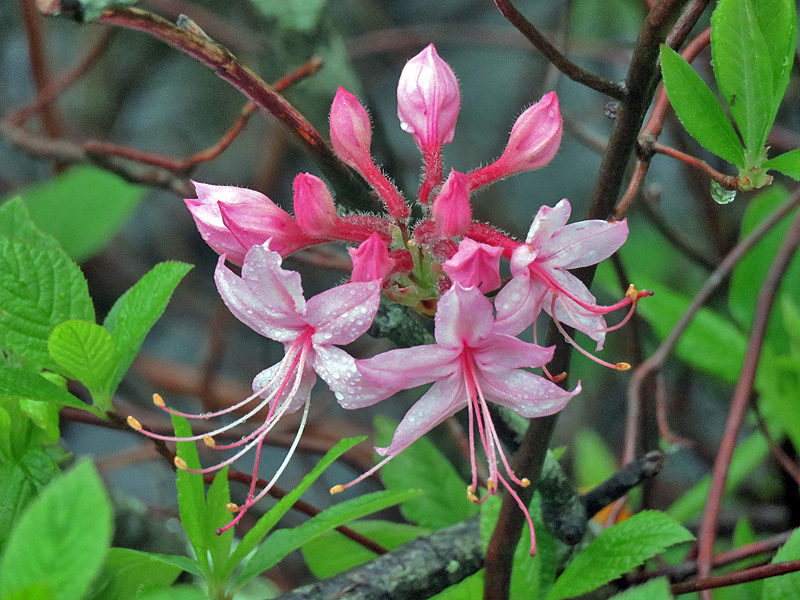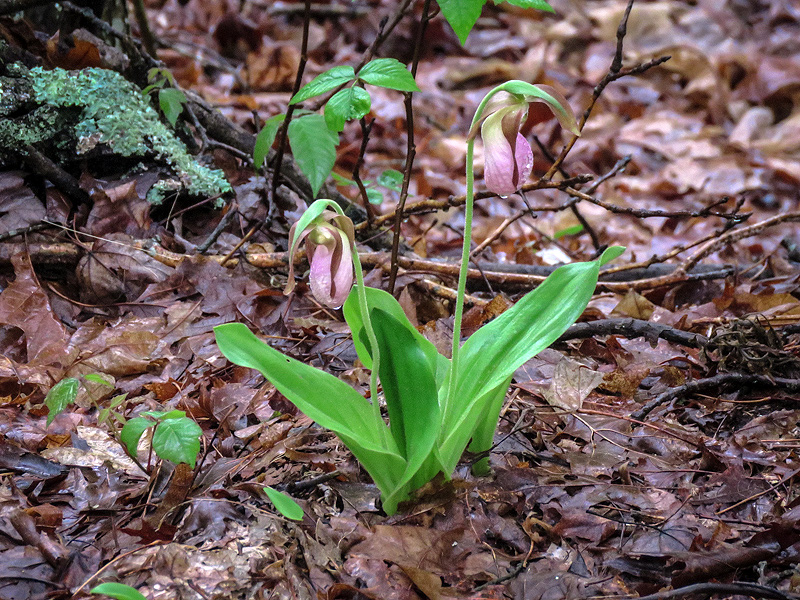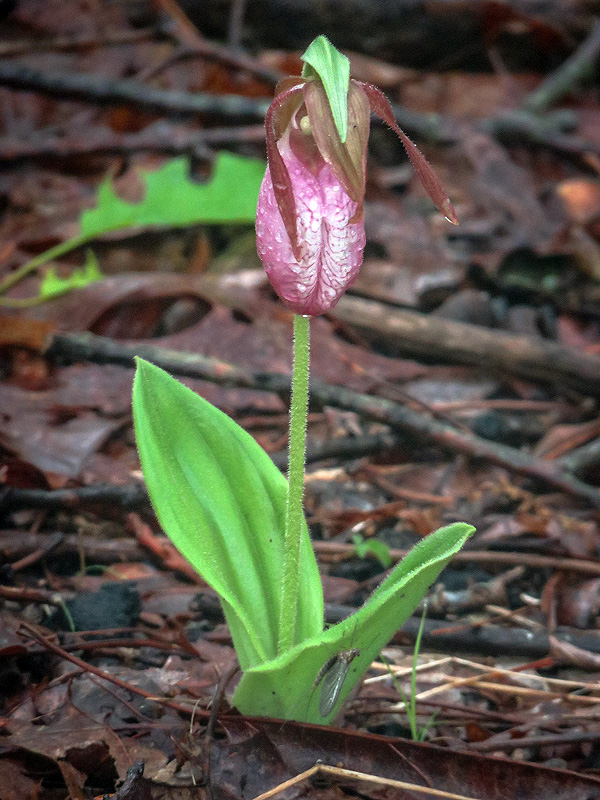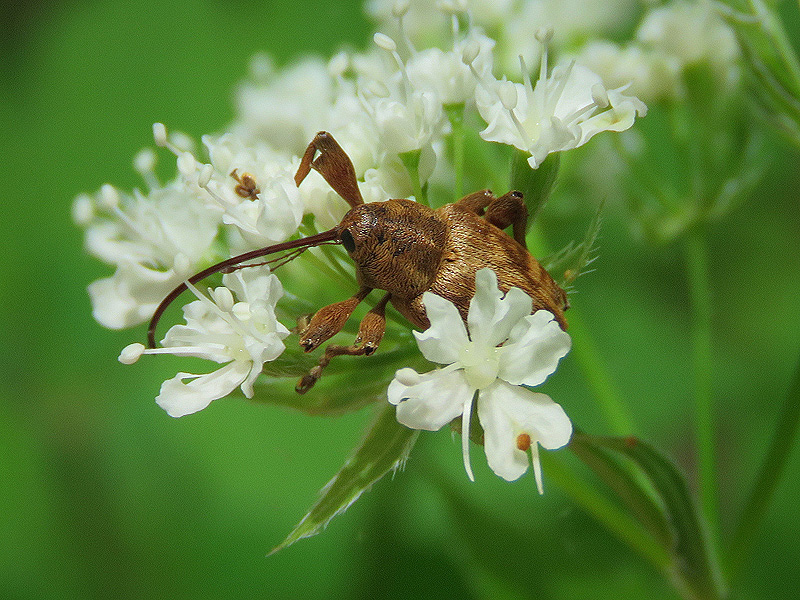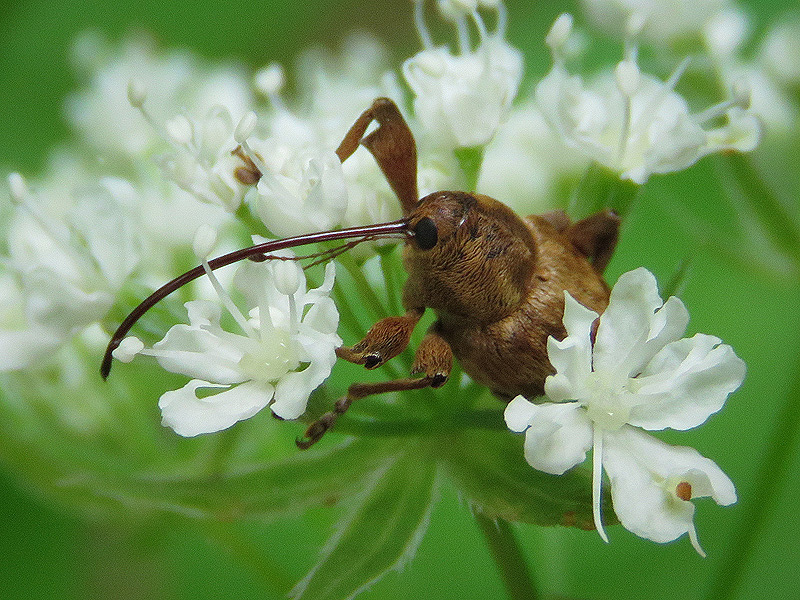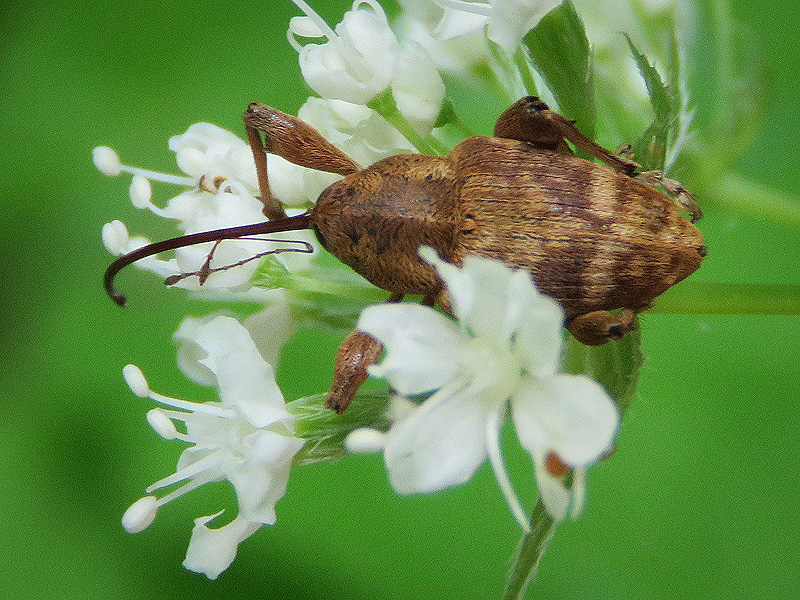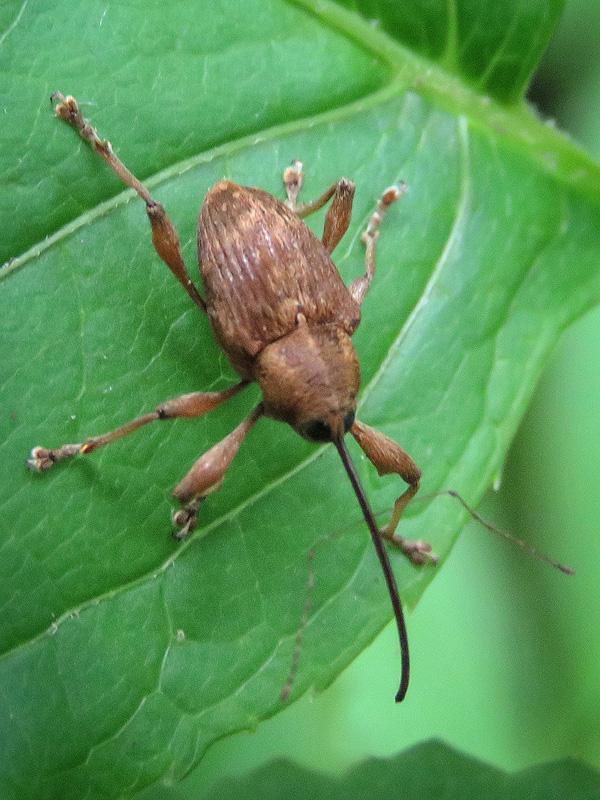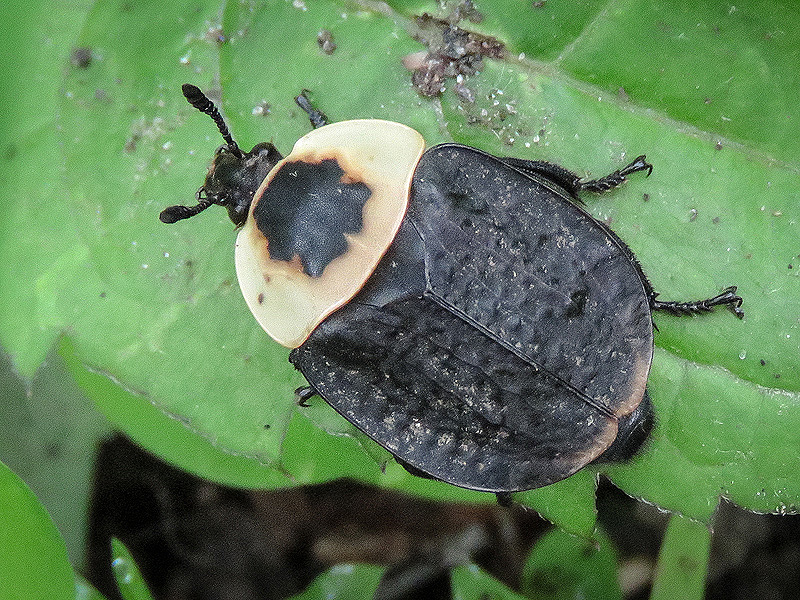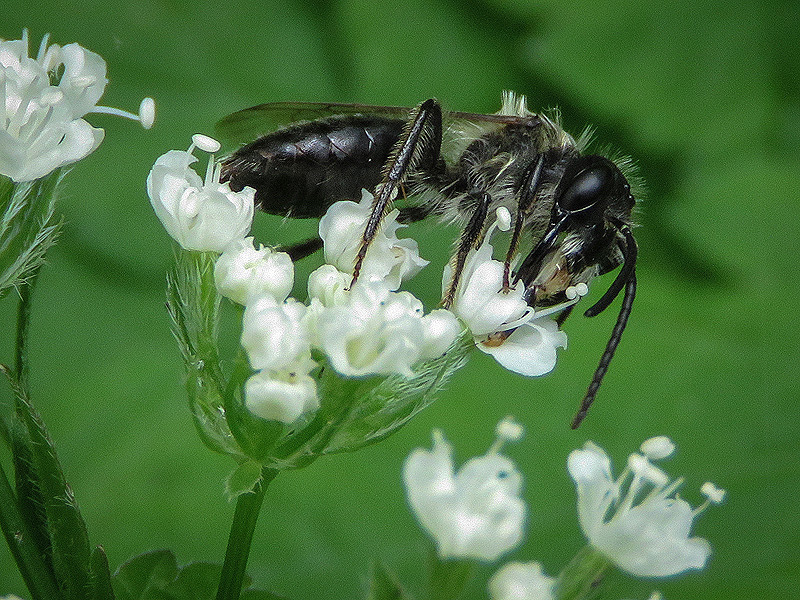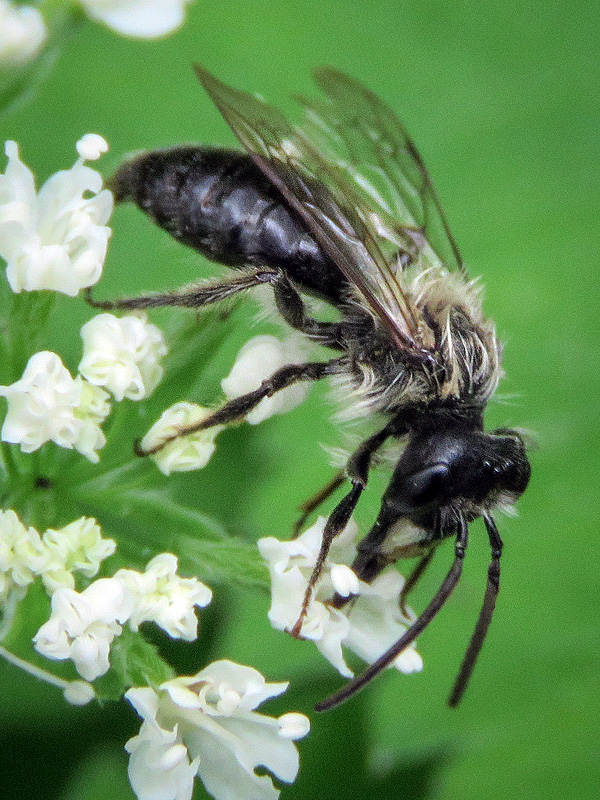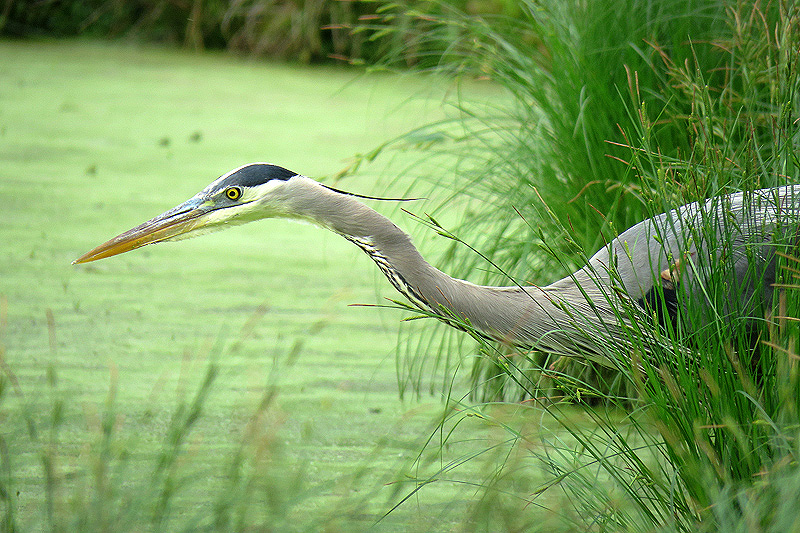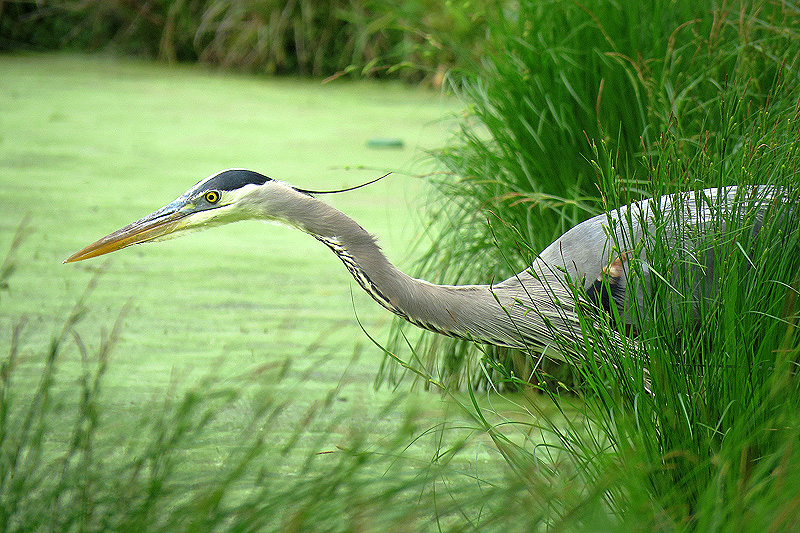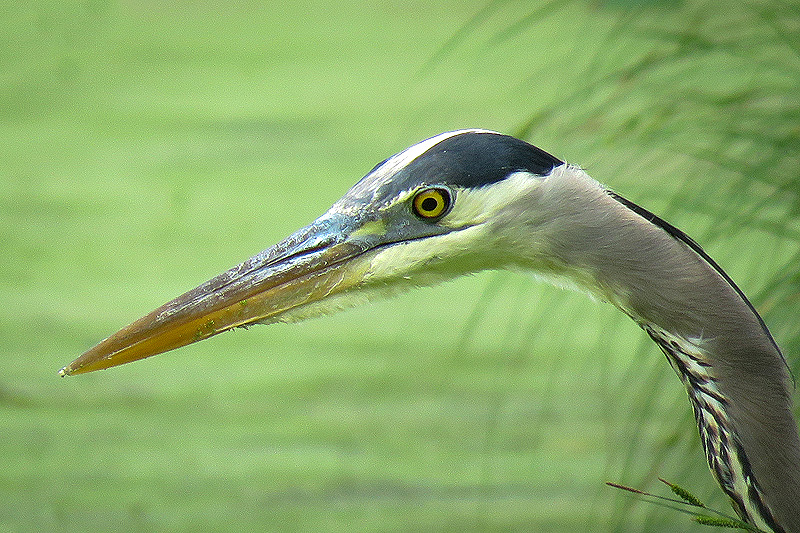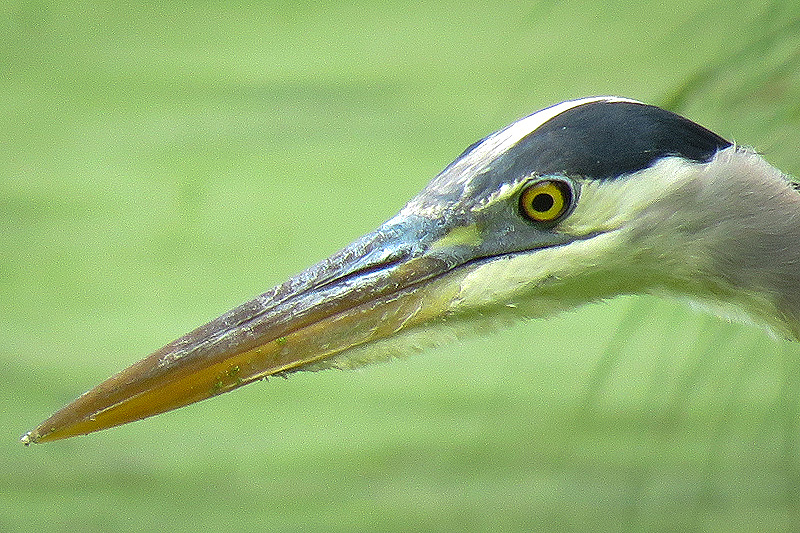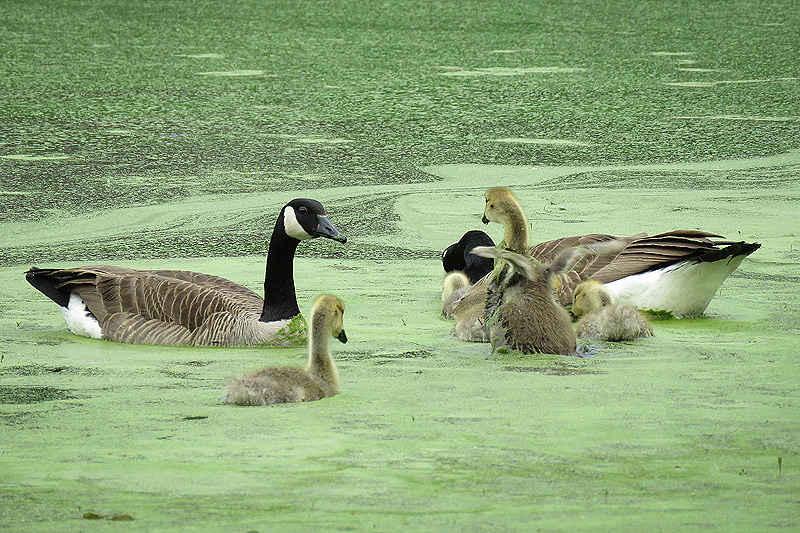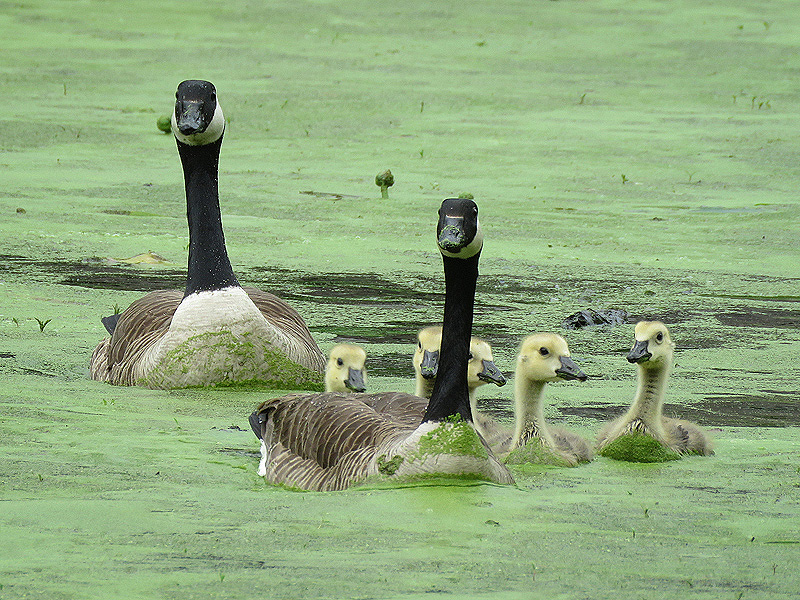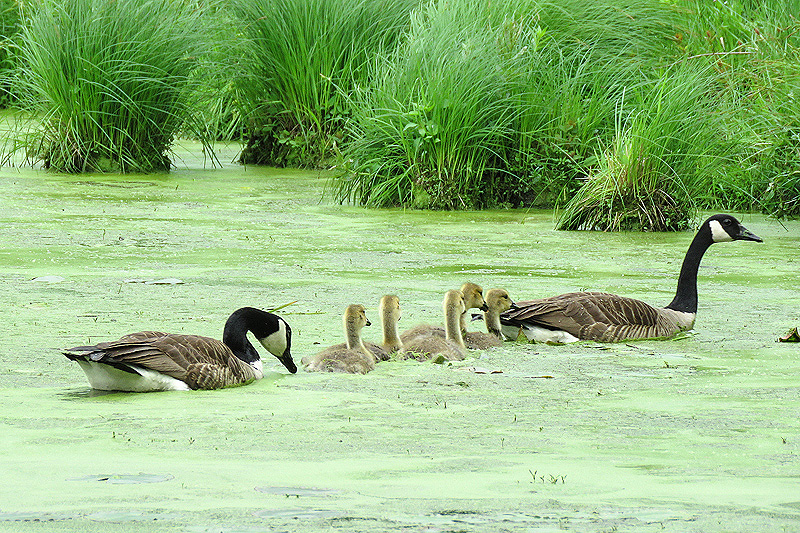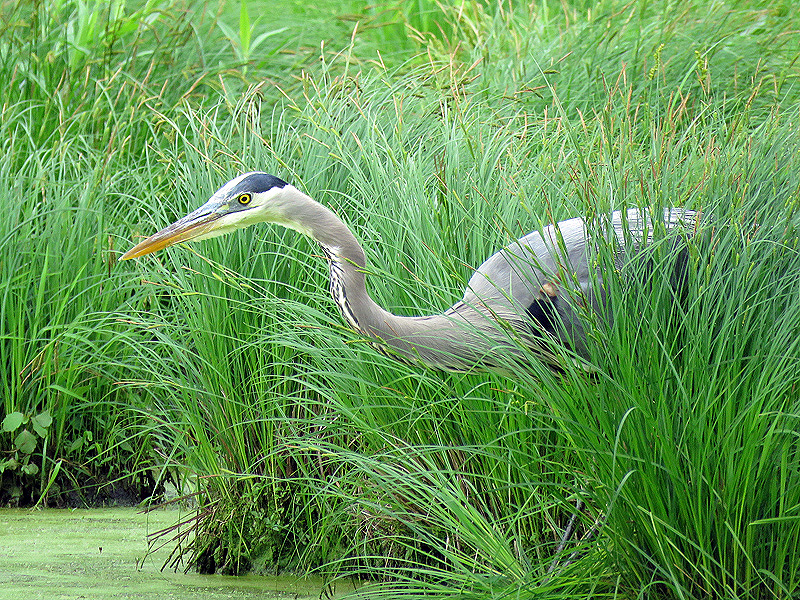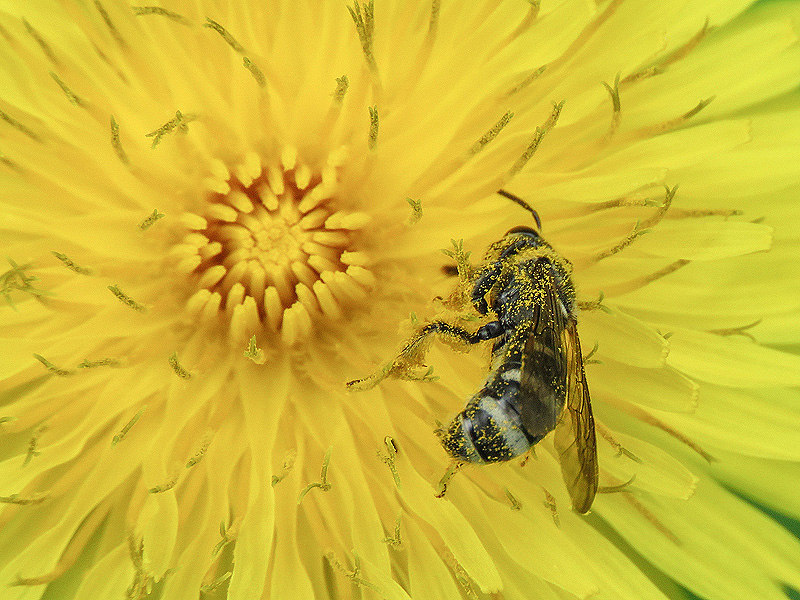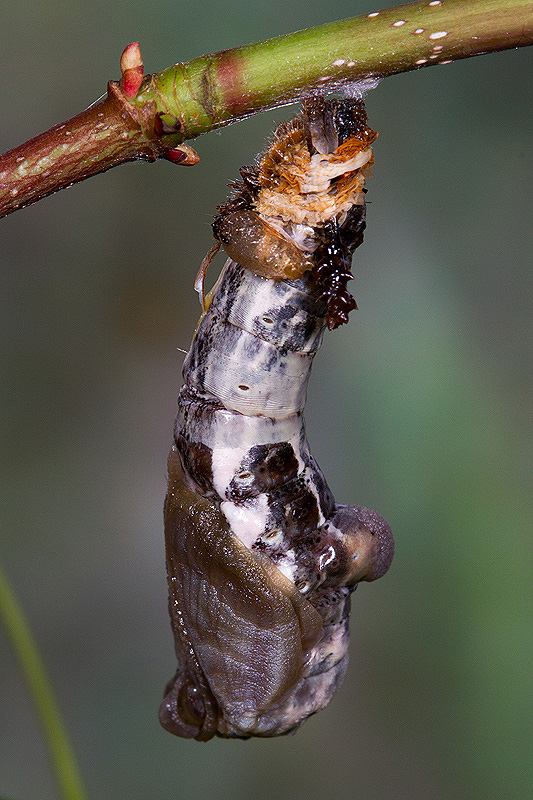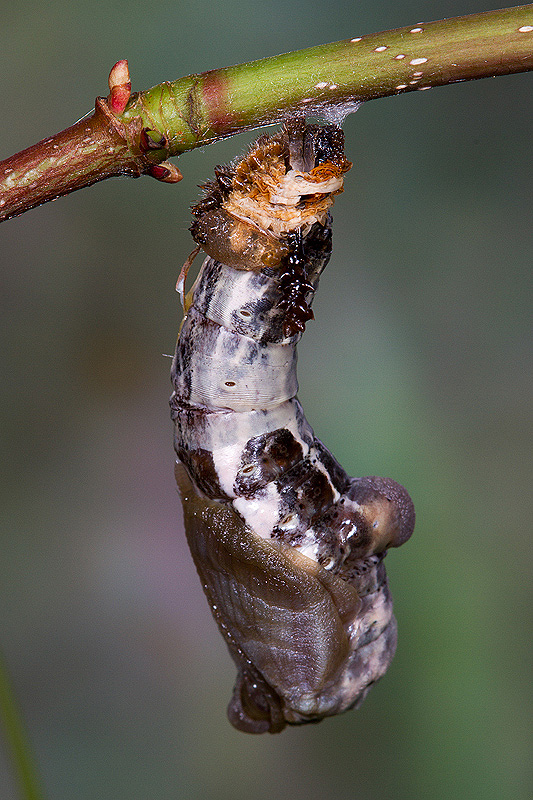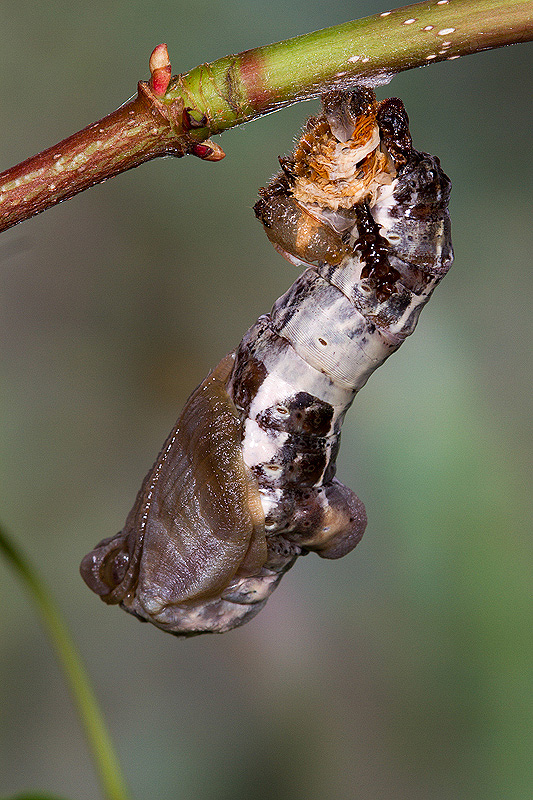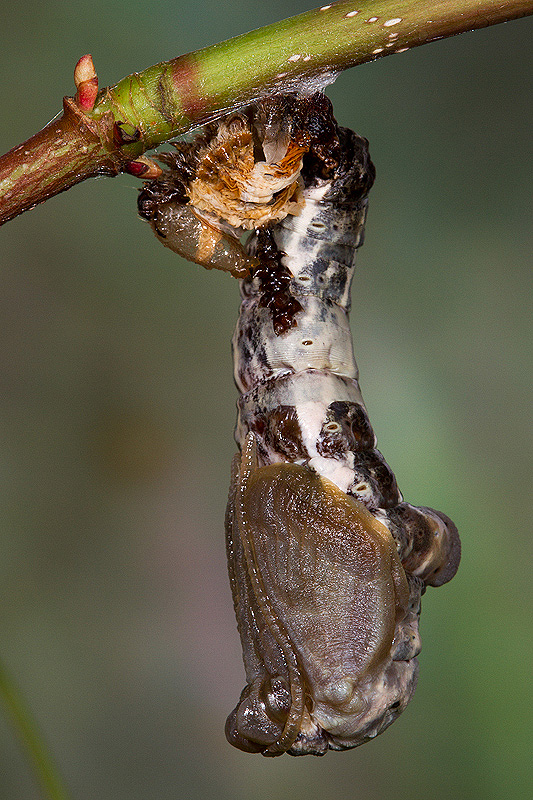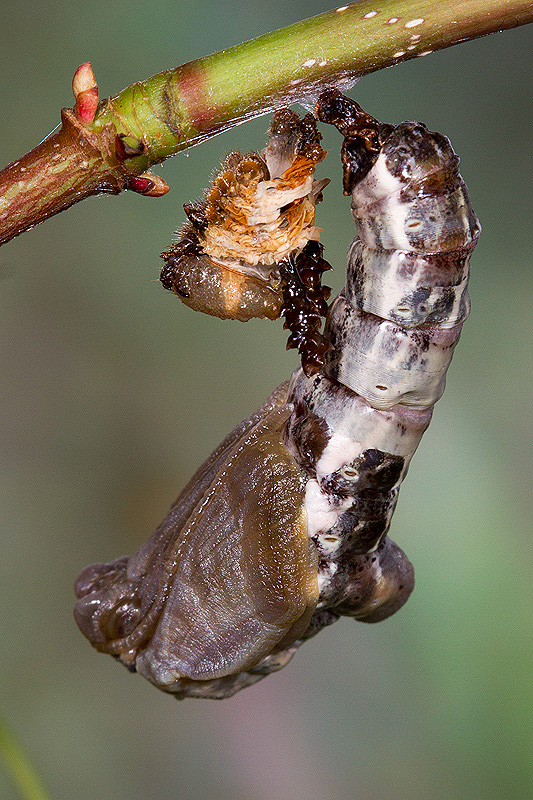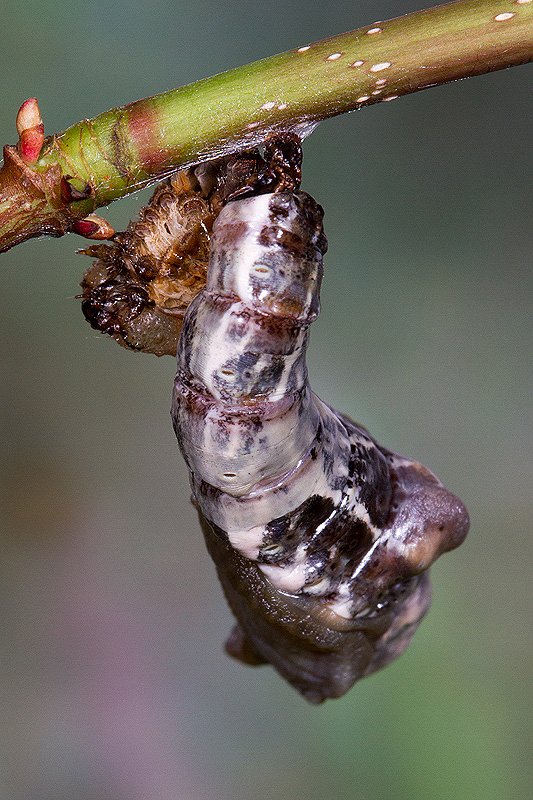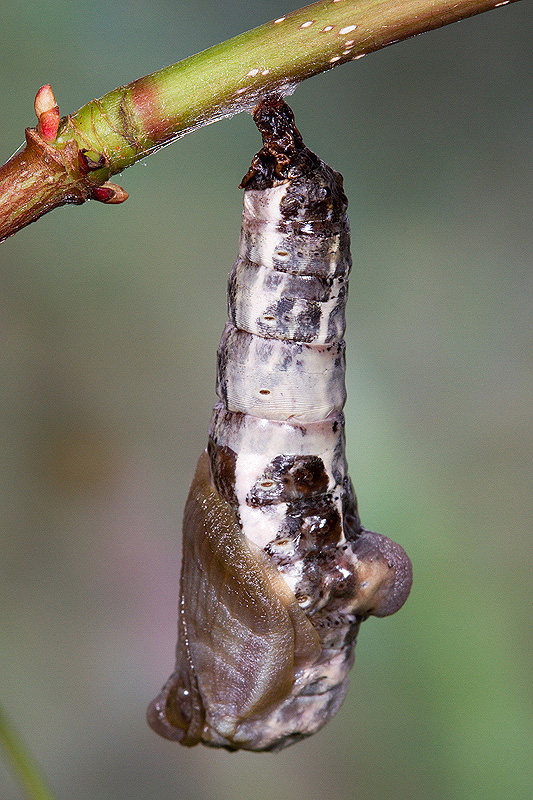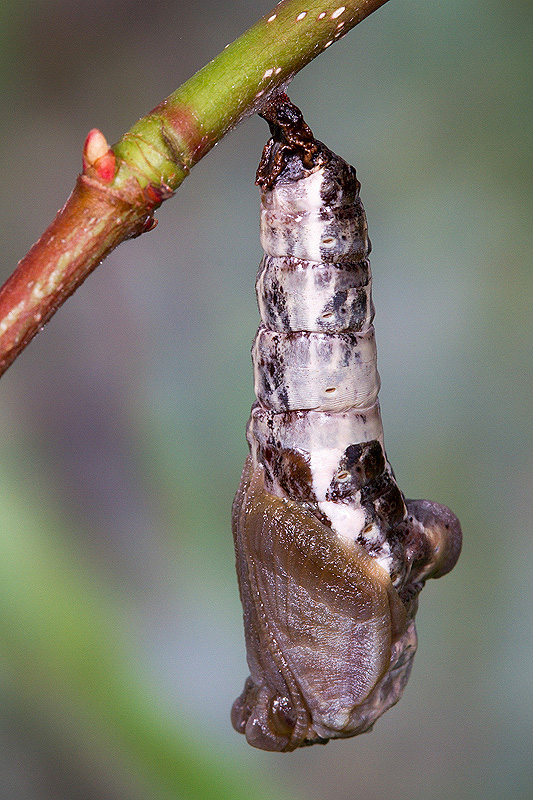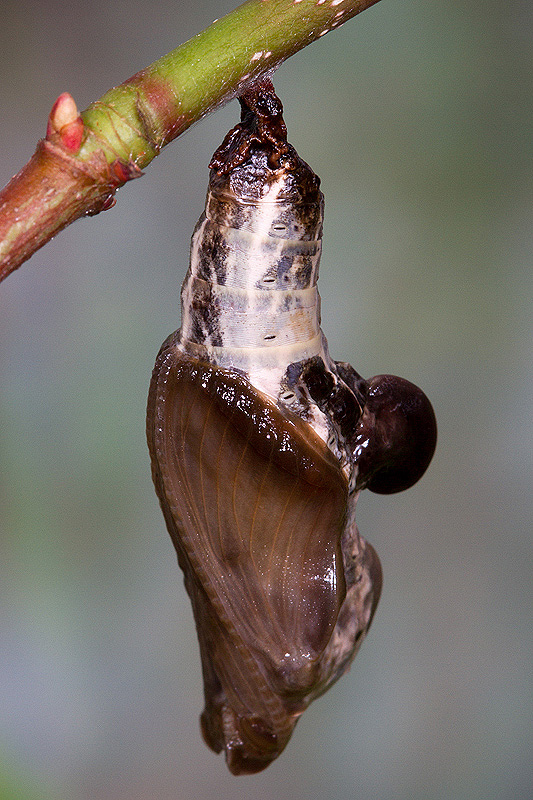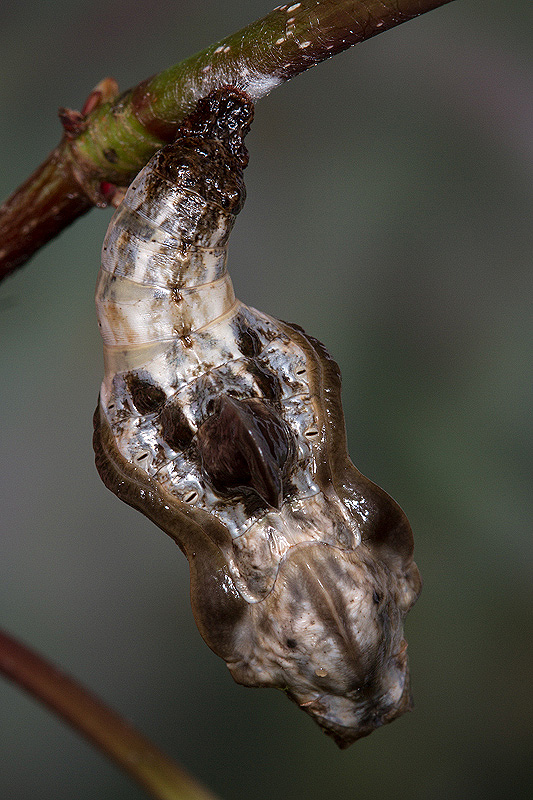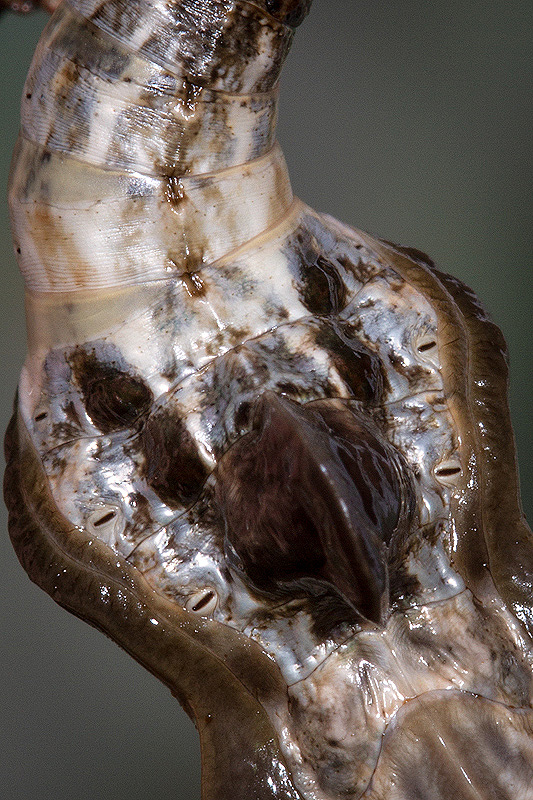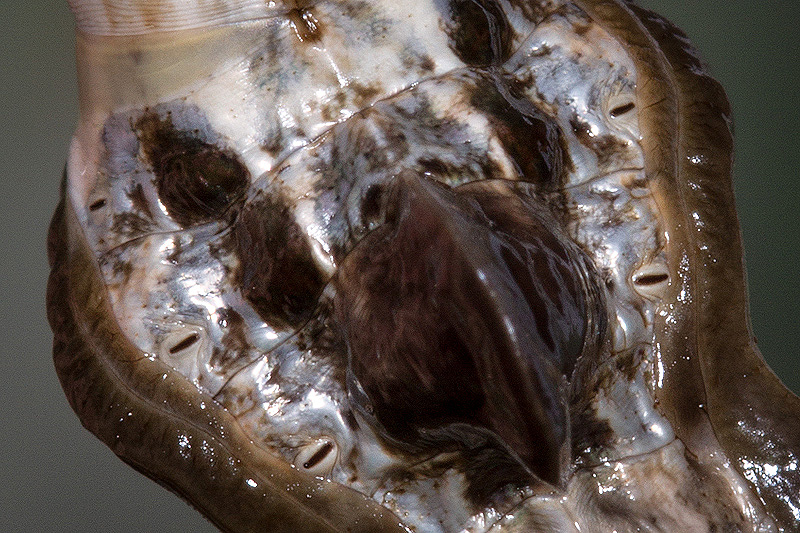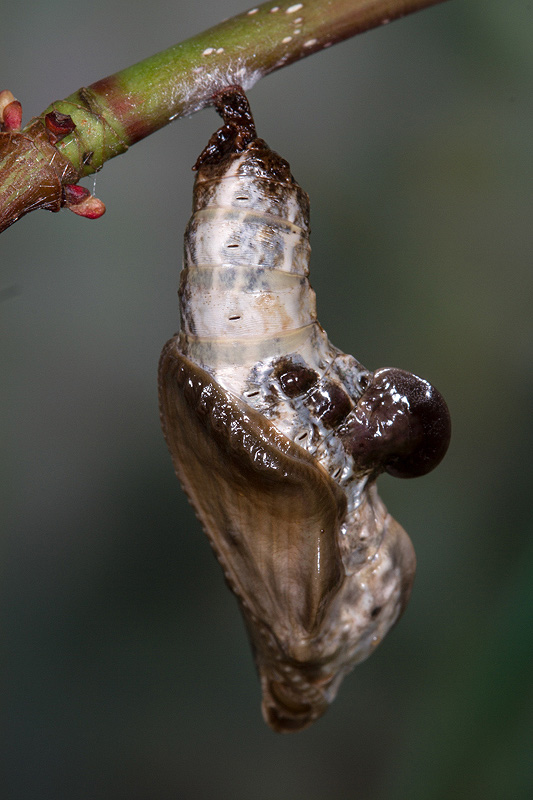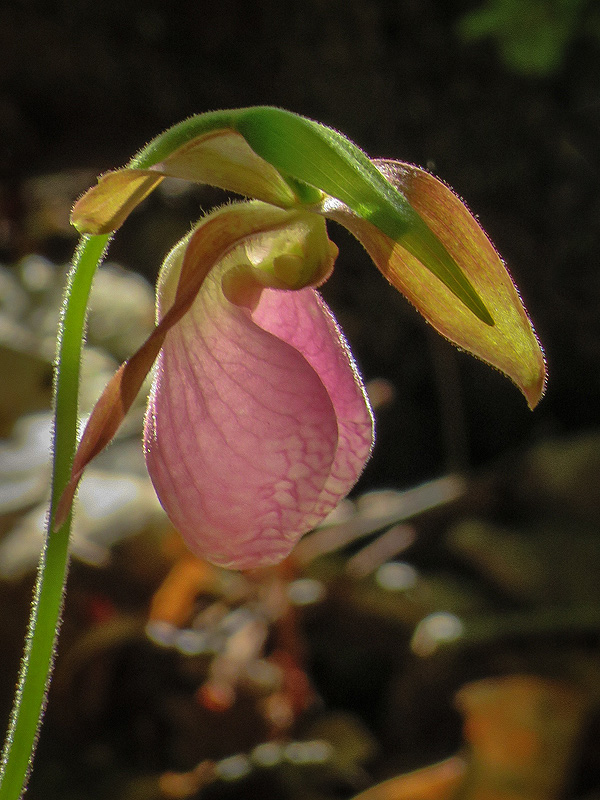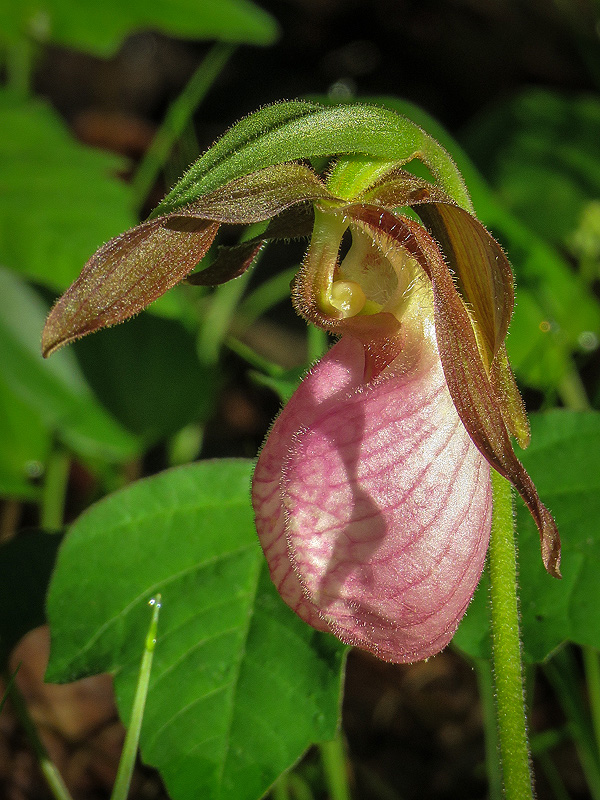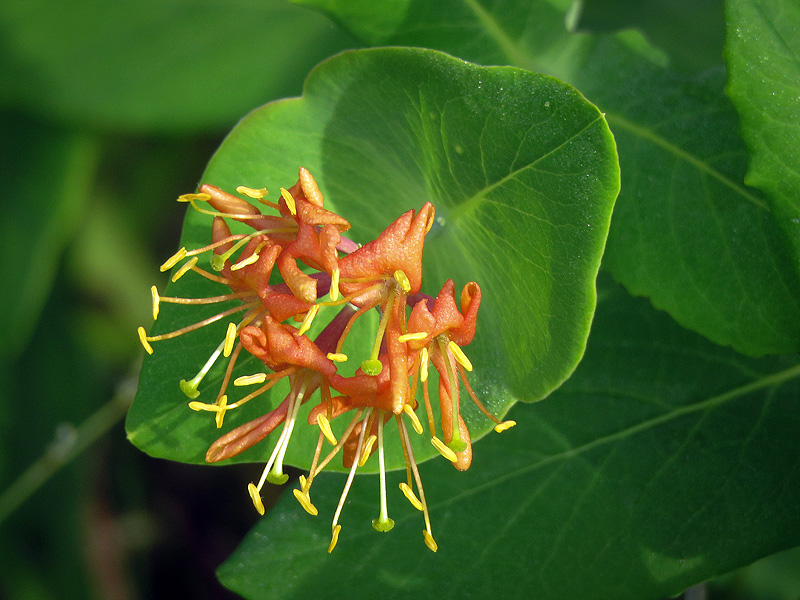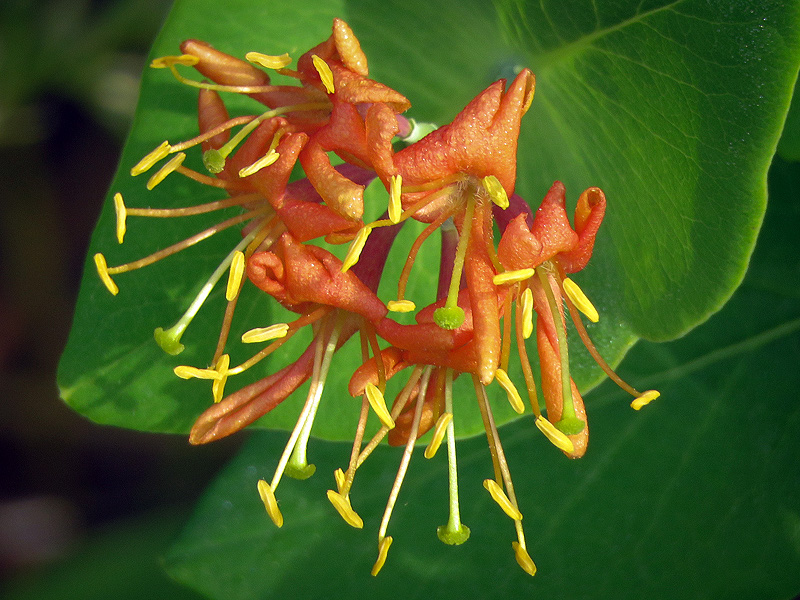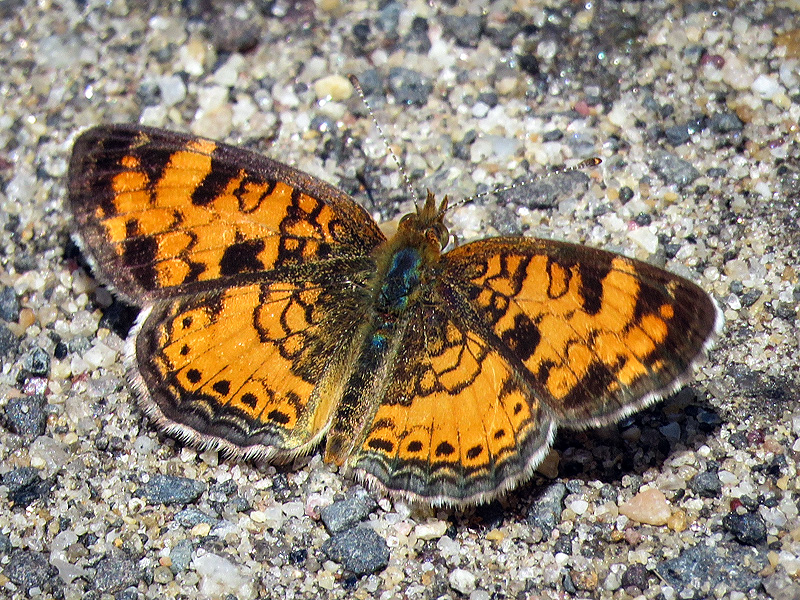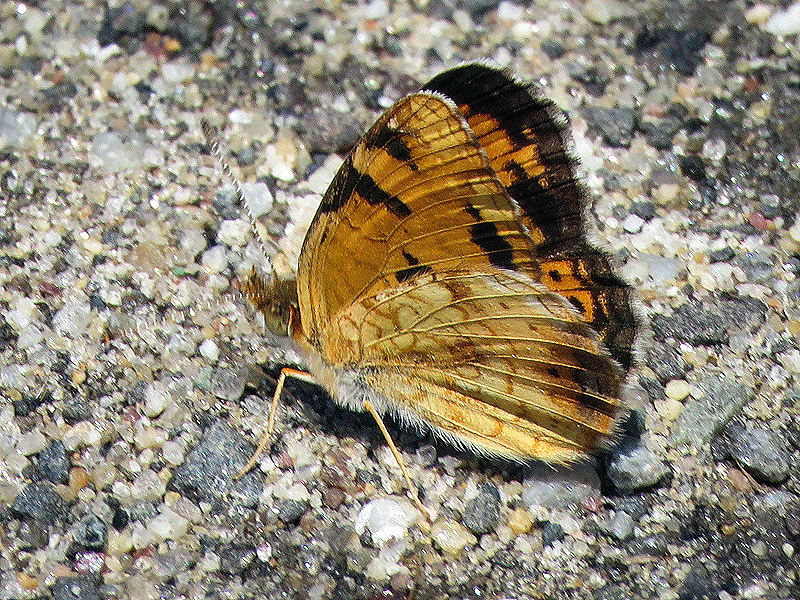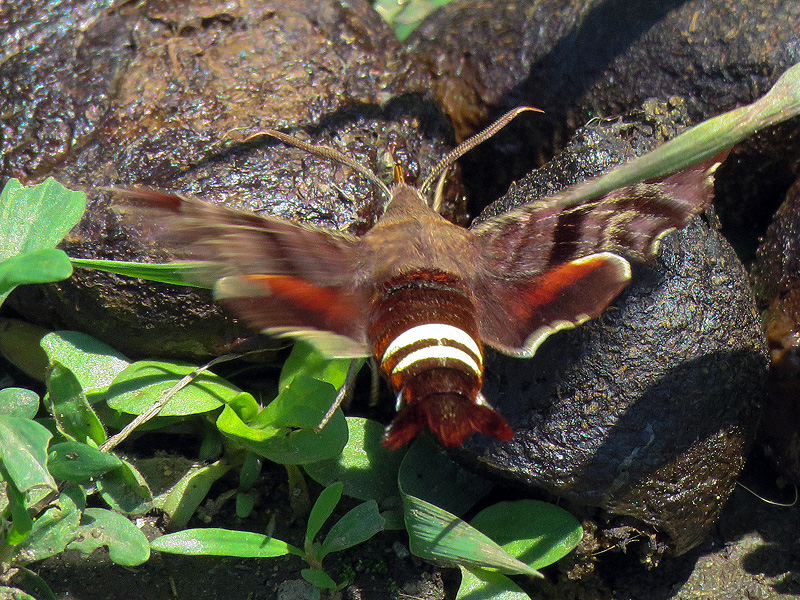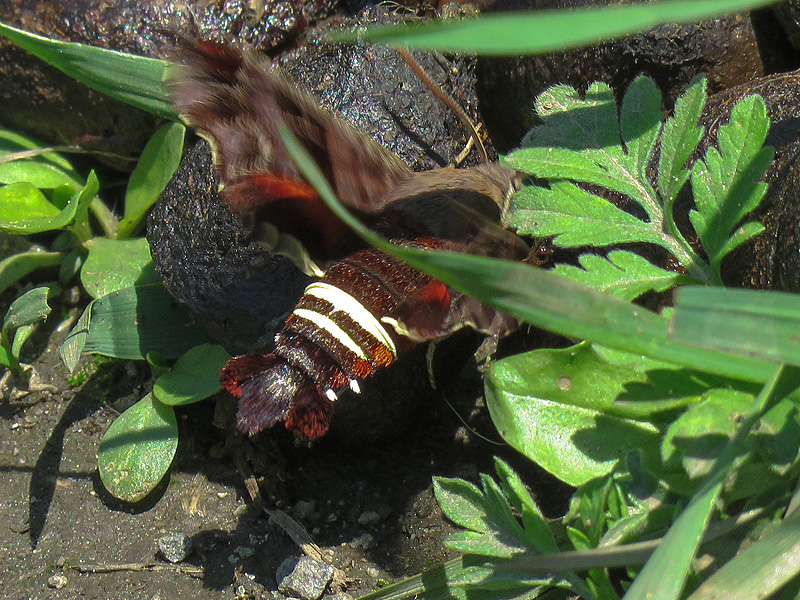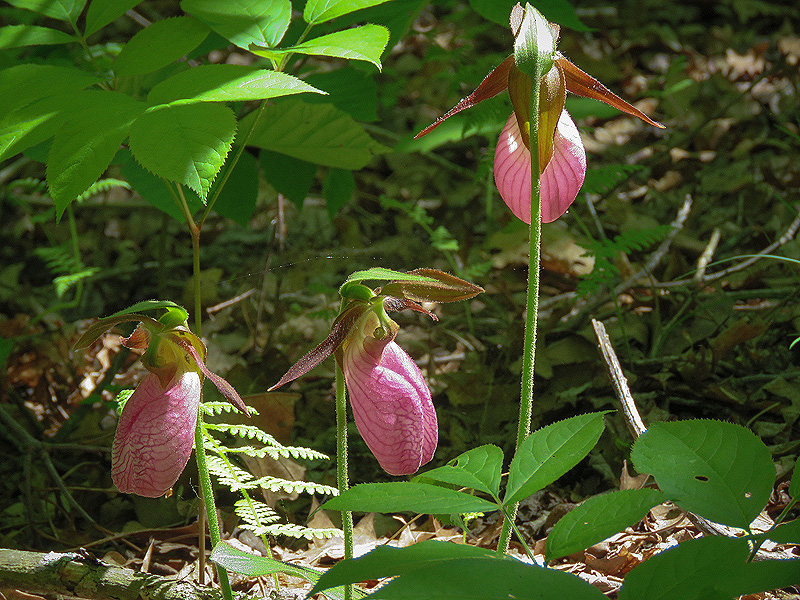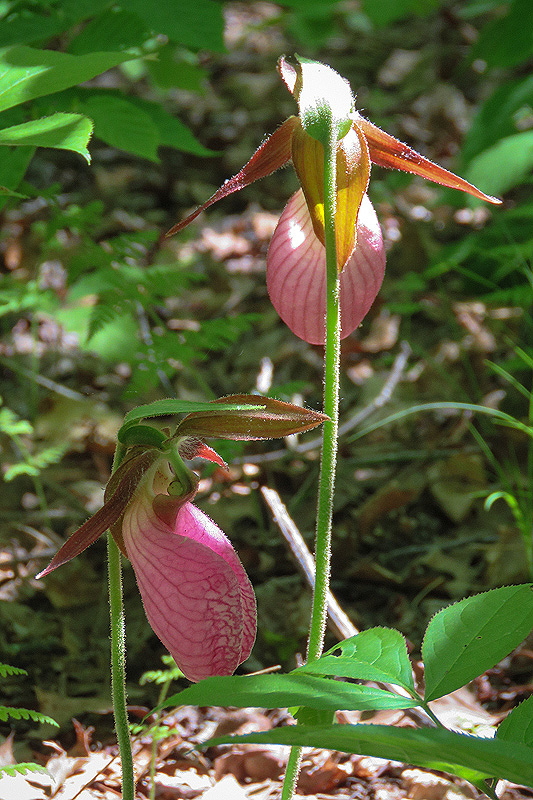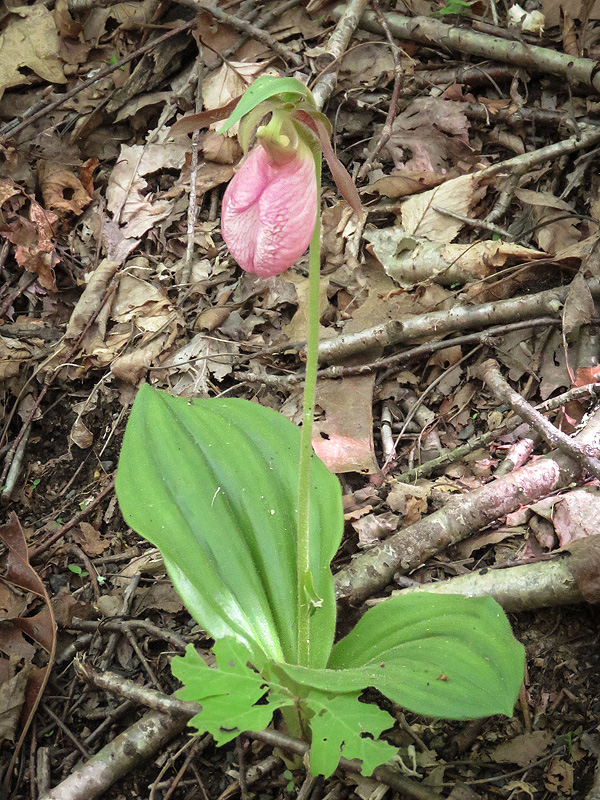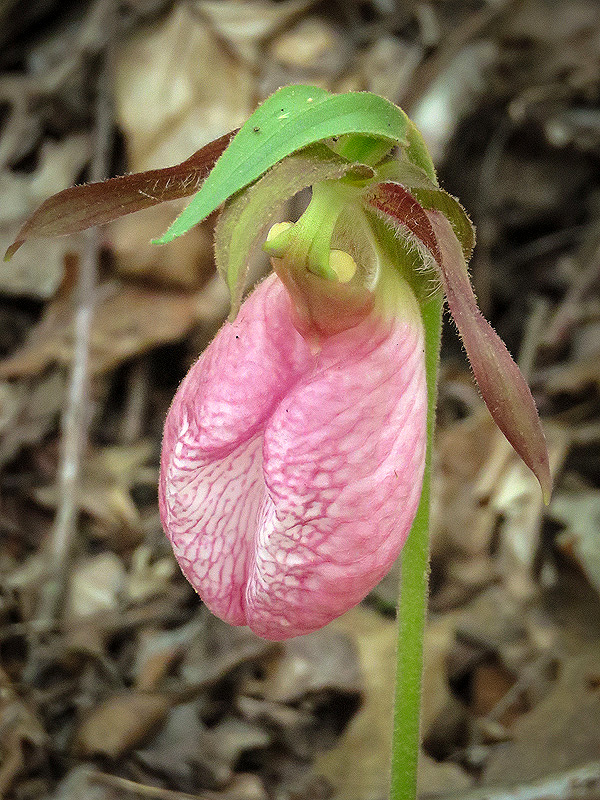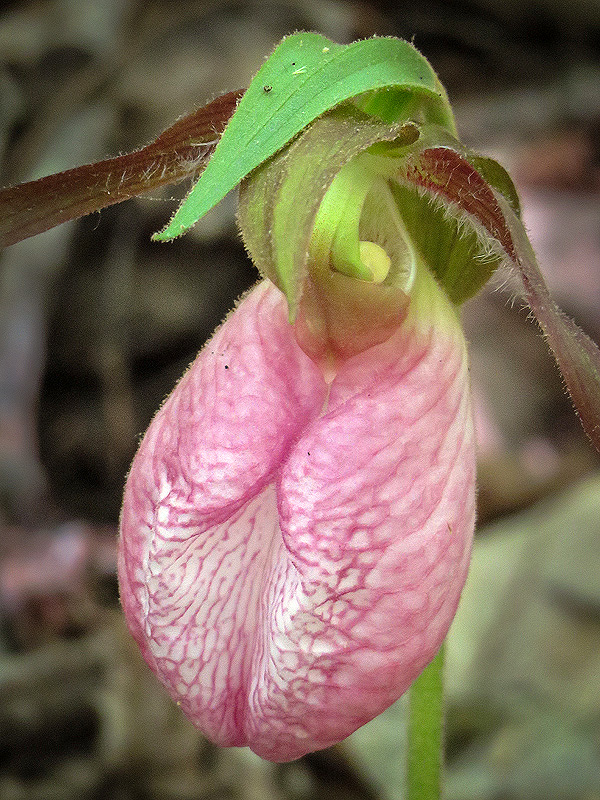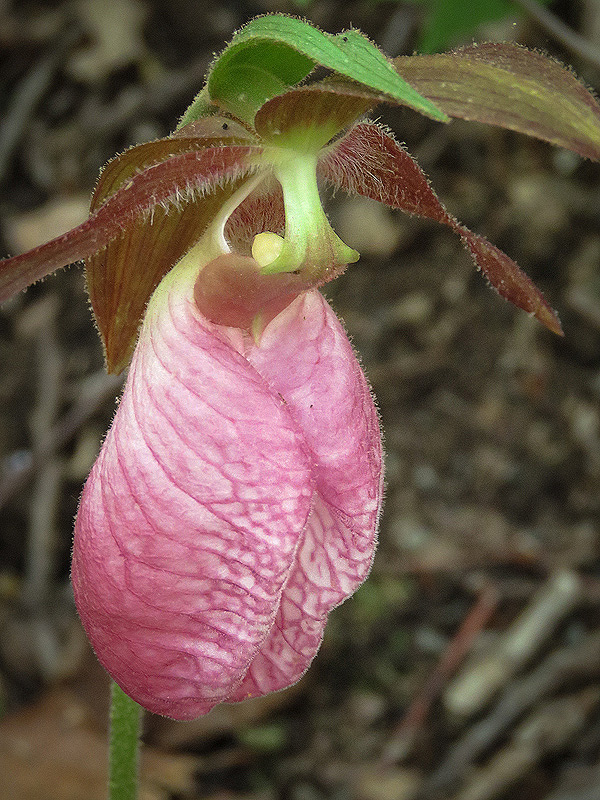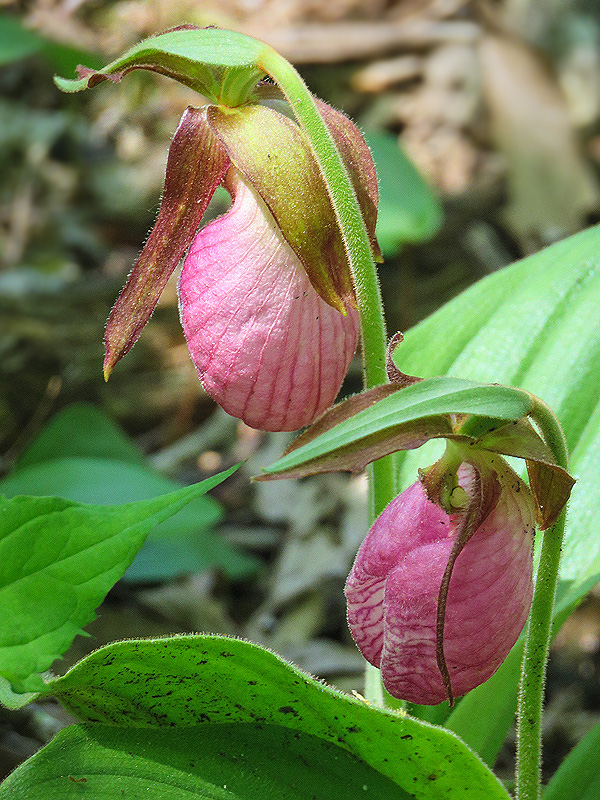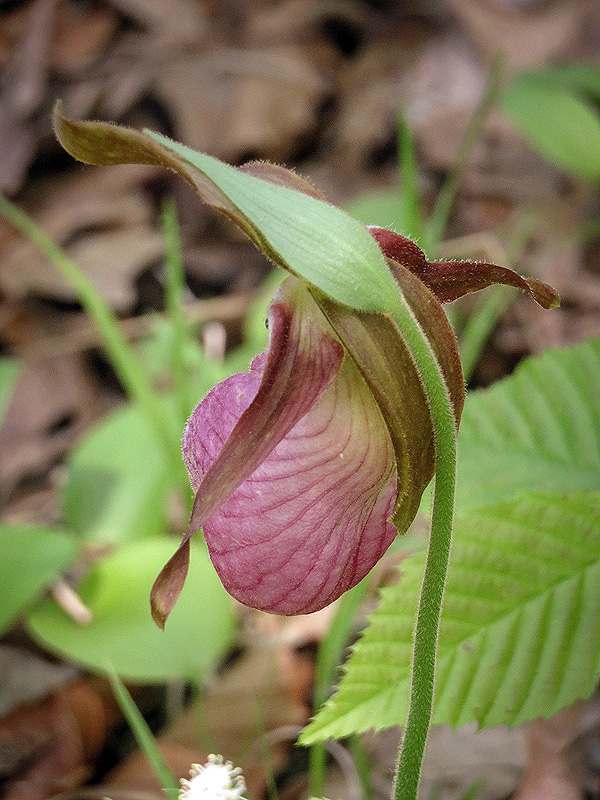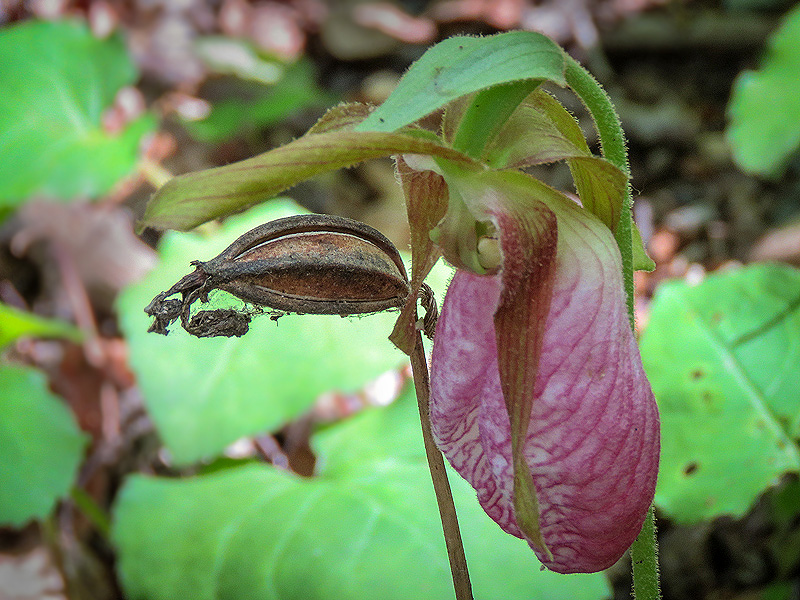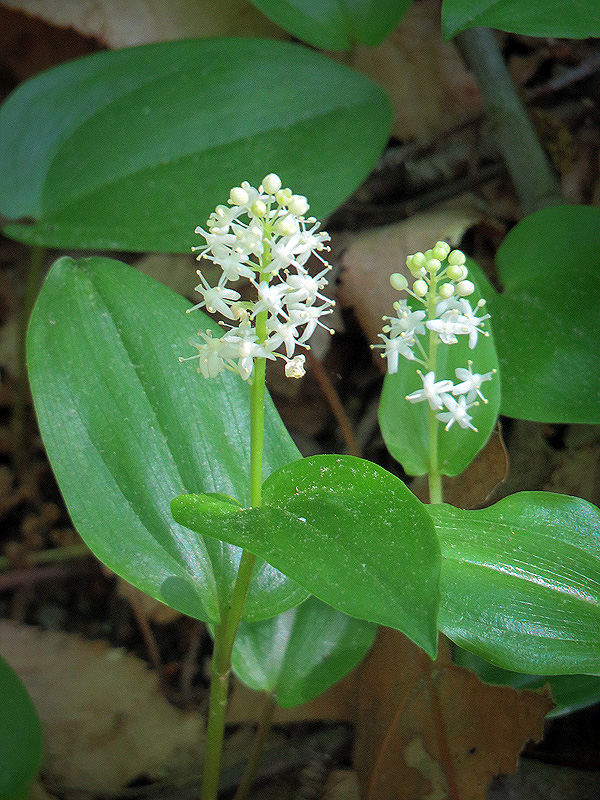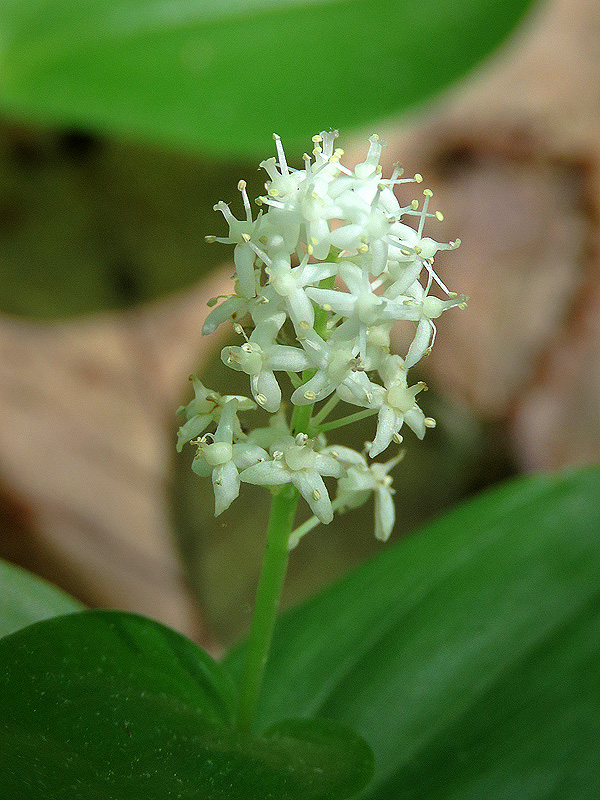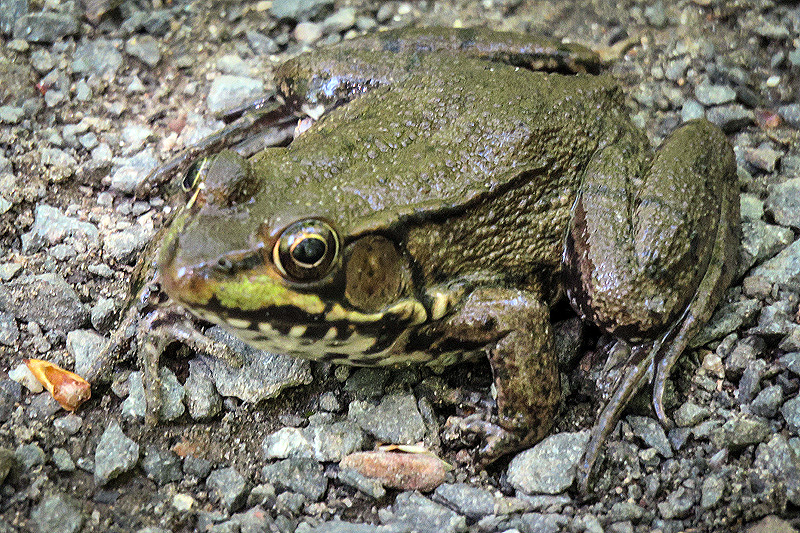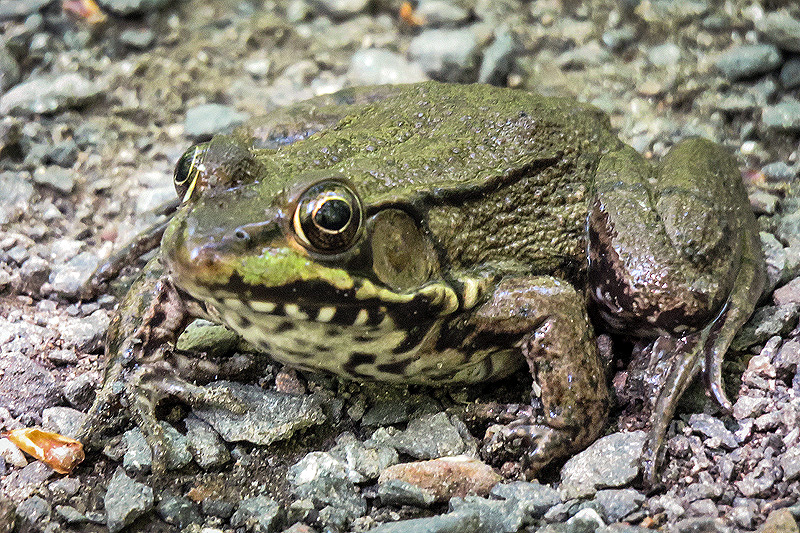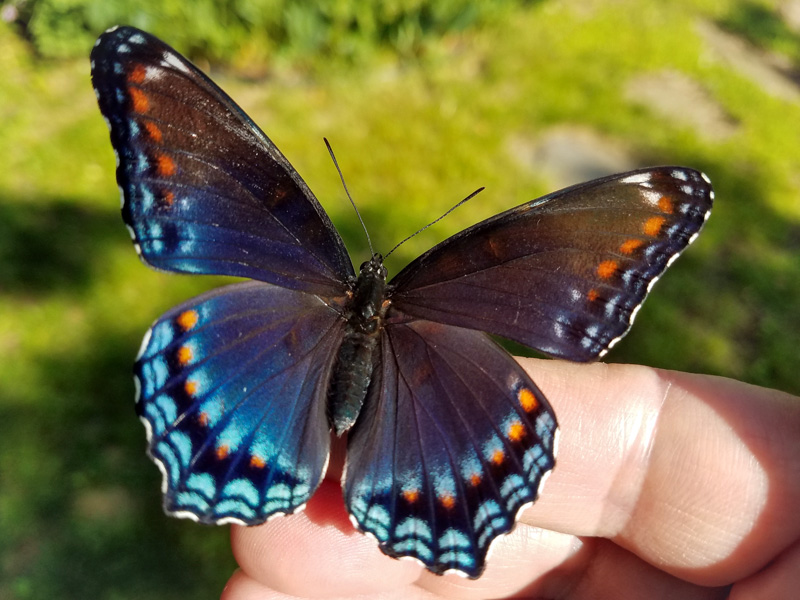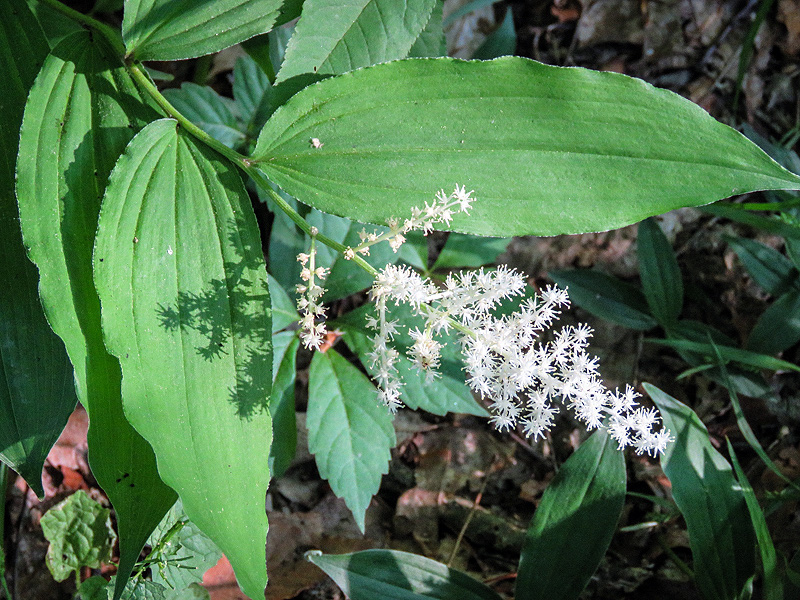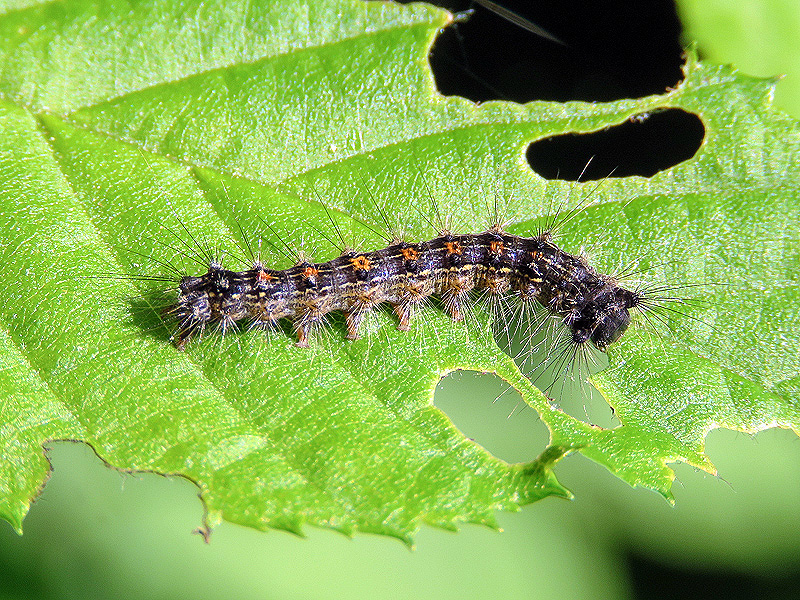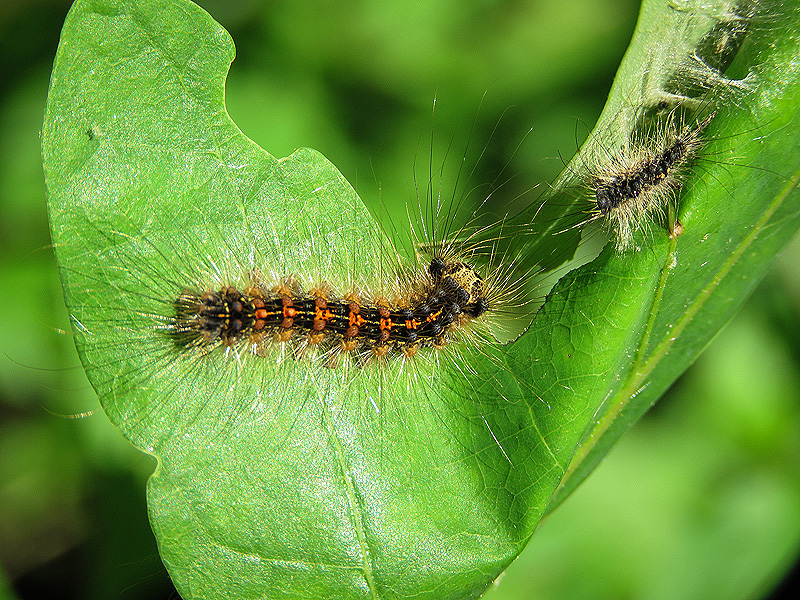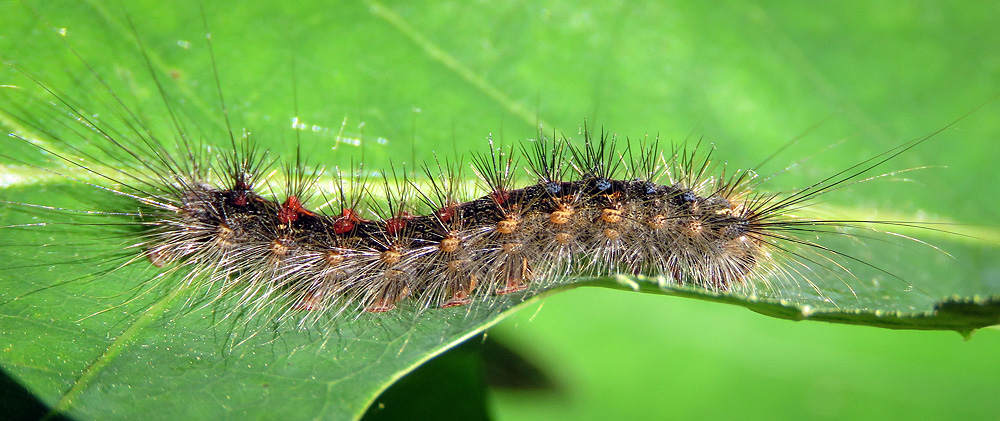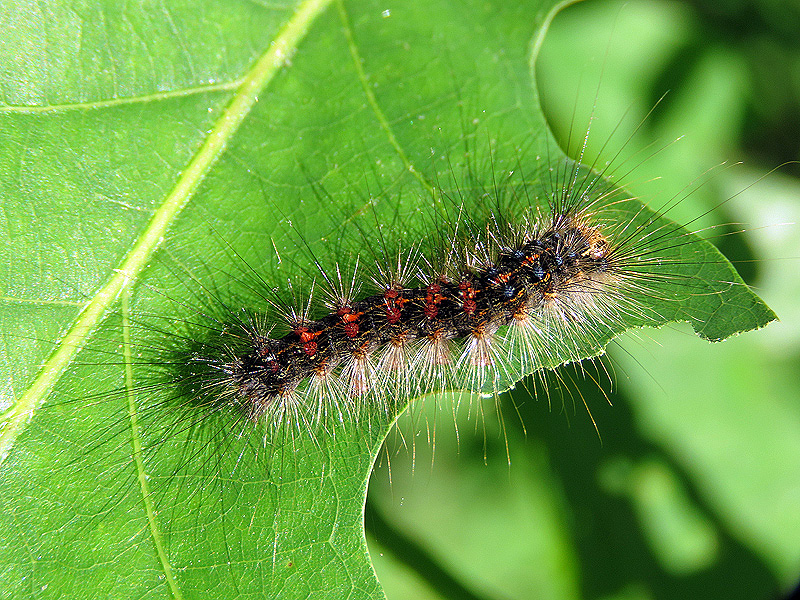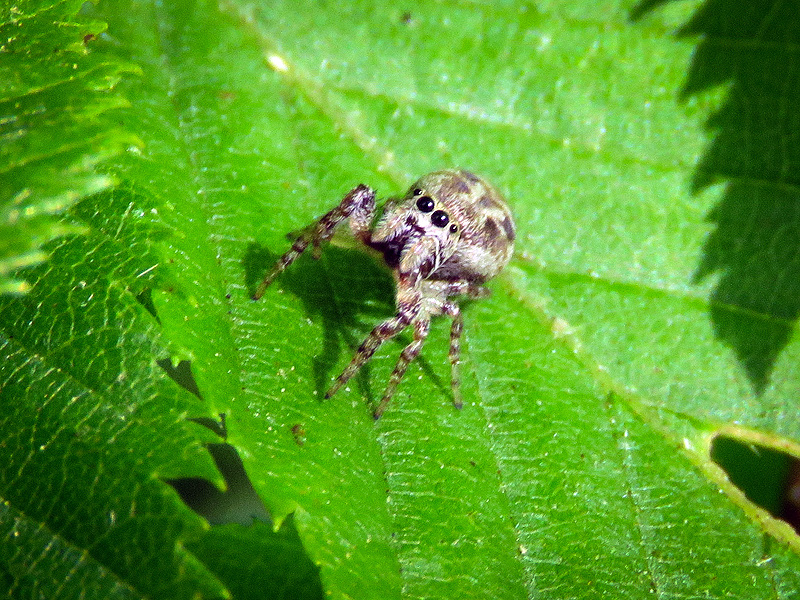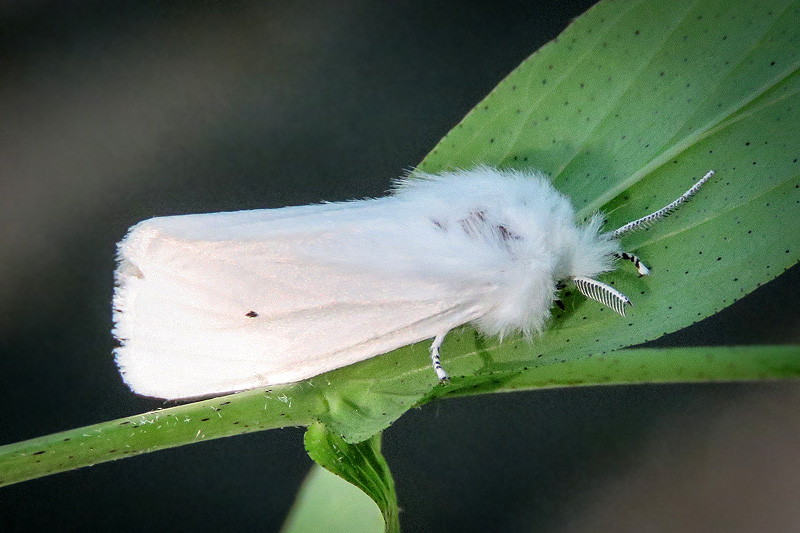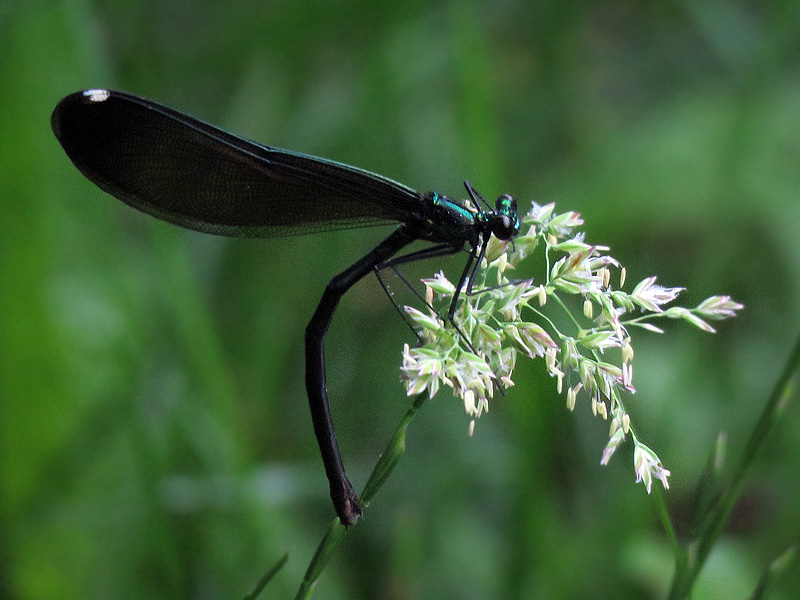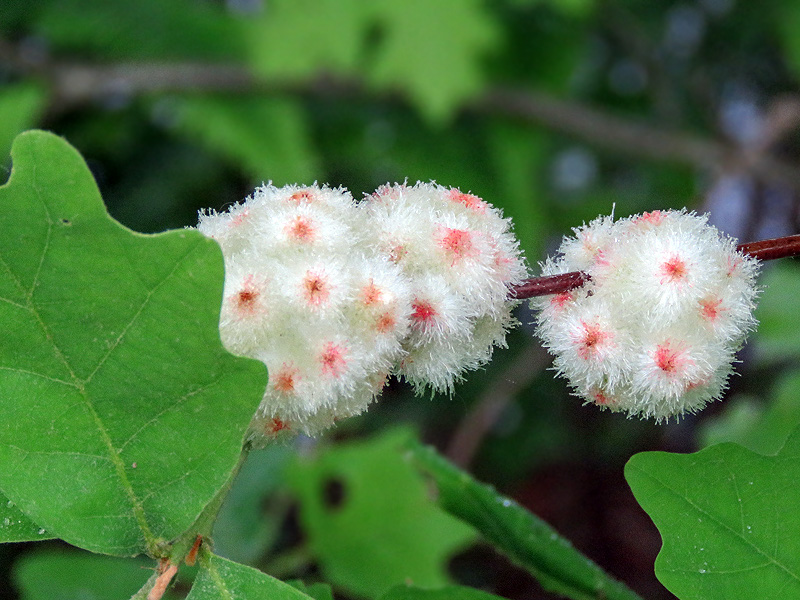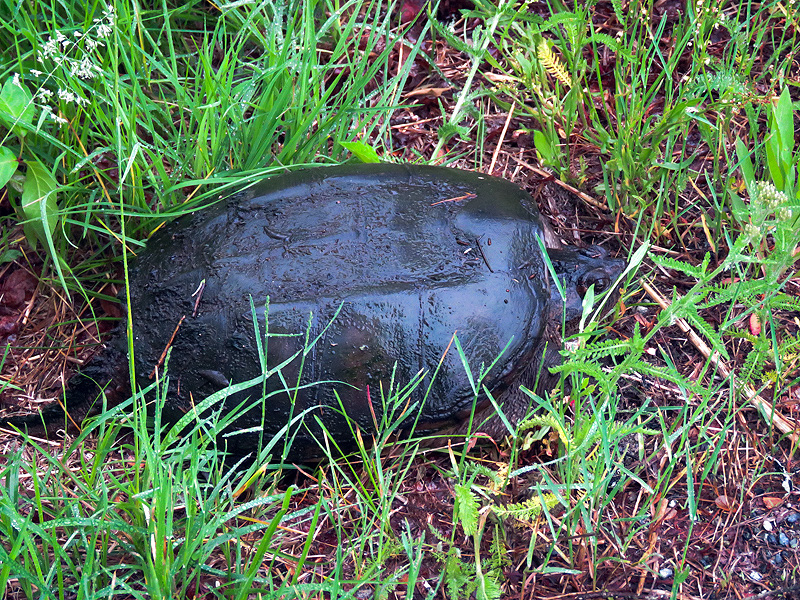Along the Air Line... 2018 - Spring, Part 11 The Air Line Trail in Eastern Connecticut - Stan Malcolm Photos |
mHome Page Stan's FlickR Albums |
May 20th. Pink Azalea or Pinxter-Flower (Rhododendron nudiflorum) flowers have begun to open. |
Pink Lady's-slipper orchids (Cyprepedium acaule) are pretty mature now, though some remain pale. |
I didn't notice the Mayfly (Order Ephemeroptera) until I edited the photo. |
An early aftgernoon stop at Cranberry Bog in East Hampton. This is an Acorn Weevil (Curculio sp.); most likely a female because of the especially long "rostrum". |
The rostrum has a pair of tiny mandibles at the tip, used to bore holes deep into nuts (not just acorns), followed by the female laying an egg in the hole and the devoping larva feeding on the nut meat. |
I wonder how many holes the beetle can drill before the mandibles are dull. |
I see these rarely, so it was a treat to see a few of them on this short walk. |
A male American Carrion Beetle (Necrophila americana). In flight, they vaguely resemble bumble bees. |
Looks like an Andrenid Bee (Family Andrenidae) to me... |
...but I shouldn't be trusted on bee IDs. |
At Cranberry bog, a very still Great Blue Heron (Ardea herodius). |
|
|
You don't want anything to do with that beak. |
Canada Geese (Branta canadensis) and goslings doing fine, growing fast. |
|
|
I've moved a bit, but the Great Blue Heron hasn't. |
Definitely an Andrenid Bee (Andreana sp.) on a Dandelion flower. |
Back home, I noticed the caterpillar from the trail (see previous page) was well along transforming to a chrysalis, shedding its skin - which you can see bunched up near the tip of the abdomen by the twig. |
Some rapid twists and gyrations... |
|
|
...and the chrysalis buries its "cremaster" (a spiny projection at the tip of the abdomen) into the silk button attached to the twig. |
A few more twists... |
...and the old caterpillar skin falls away. |
Eye, antenna, and front wing visible on the chrysalis' surface. |
A few hours later, the chrysalis shape and coloration has changed. |
The morning of May 21st. A few more chrysalis pictures, these looking down on the back, whereas yesterday's photos were side views.. |
The segmental spiracles (breathing openings) and prominent. |
|
The caterpillar looked like a bird poop. The chrysalis looks like an especially gloopy wet one. |
Back to the trail. Still May 21st. Pink Lady's-slipper orchids (Cyprepedium acaule) looking good in the sun. |
|
May 22nd. Limber Honeysuckle (Lonicera dioica). |
|
May 23rd. A brief walk at the far end of the Colchester Spur. Pearl Crescent (Phyciodes tharos). |
Extracting minerals from the soil. |
One of two Nessus Sphinx Moths (Amphion floridensis) feeding at dog feces which provide nutrients not found in nectar from flowers. |
Never landing, they feed like hummingbirds. |
May 24th. Plenty of Lady's-Slipper Orchids (Cyprepedium acaule) flowering east of Route 207. |
|
|
|
|
|
|
|
Last year's seedpod beside this year's flower. |
Canada Mayflower (Maianthemum canadense). |
|
Green Frog (Rana clamitans). |
|
May 31st. Remember the "bird poop" chrysalis above? The butterfly has emerged and it's a Red-Spotted Purple (Limenitis arthemis astyanax). |
Back on the trail after 5 days in New Hampshire. False Solomon's-seal (Smilacina racemosa). |
Thankfully, Gypsy Moth (Lymantria dispar) caterpillars are not numerous, at least on the sections I generally walk. A few on Beech; more on Oaks, their favorite food - though they will eat everything during outbreaks. I think this is a mature 2nd instar... |
Here, a shriveled cast-off 2nd instar skin, and the 3rd instar caterpillar that came from it. |
Diagnostic of late instar caterpillars are the 5 pair of blue tubercles near the head, followed by 6 pair of red tubercles. |
|
A teeny male Jumping Spider. |
Pure white Virginian Tiger Moth (Spilosoma virginica). |
June 1st. A male Black-winged Damselfly (Calopteryx maculatum). |
Wool-sower Galls on White Oak (Quercus alba), caused by tiny Cynipid wasps (Callirhytis seminator). |
A female Snapping Turtle (Chelydra serpentina). I've been seeing their tracks across the trail for several days, but this is the first I've seen laying eggs. |
